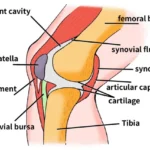Frequent smartphone use can lead to painful issues
Cellphones have changed our lives, but are they also causing injuries? The internet seems to think so. Smartphone pinky is just one of many device-related injuries that have gone viral in recent years.
Constant cellphone use can cause a range of joint problems. While some claims of injury might be overstated, others are real and involve serious, long-term damage
What types of joint injuries may be related to mobile devices?
Spending hours a day on your phone places an unnatural strain on your joints. The most common smartphone-related injuries include:
- Smartphone pinky.
- Cubital tunnel syndrome (smartphone elbow).
- Texting thumb.
- Text neck.
Smartphone pinky
Online images of smartphone pinky show a wide gap between your ring and pinky fingers. Other photos point to a bump in your pinky where you support your phone when you’re talking, texting or scrolling.
But most of these images don’t highlight a problem. They show typical pinky anatomy, which can vary widely,. It’s also possible that people who think they have smartphone pinky could have an underlying condition.
He suggests the cause could be one of the following:
- Clinodactyly is a genetic malformation of the finger. It usually affects your pinky finger and causes the tip to bend toward your ring finger. For most people, clinodactyly doesn’t cause symptoms or interfere with how their pinky functions.
- Dupuytren’s contracture is a condition that leads to deformity, usually in your pinky and ring fingers. Thick cords form under your skin and pull your fingers toward your palm. This slow process occurs over many years. And there’s no reason to believe smartphones cause or aggravate this condition.
Is smartphone pinky real?
there’s a slight risk that supporting your phone with your pinky could compress a nerve in your finger. Over time, you could experience pain, numbness or tingling.
But tingling or numbness in your pinky could also signal a more serious condition called cubital tunnel syndrome. This condition is also known as smartphone elbow
Cubital tunnel syndrome (smartphone elbow)
Cubital tunnel syndrome is a cumulative traction compression injury to your ulnar nerve, one of the main nerves in your arm, that occurs when you bend your elbow too frequently beyond 90 degrees.
Holding your phone up when talking or texting can cause or aggravate existing cubital tunnel syndrome — hence the name smartphone elbow. But sitting in a low chair and over-flexing your elbow or resting it on the arms of your chair when you’re typing, or sleeping with your arms tucked in, is equally bad
How does cubital tunnel syndrome occur?
Your ulnar nerve travels down your inner arm and then around the bony prominence (epicondyle) of your elbow before it reaches your ring and pinky fingers. It provides sensation and controls movement. At your elbow, your ulnar nerve passes through a narrow opening at the epicondyle called the cubital tunnel.
Bending your elbow causes traction and places pressure on your ulnar nerve at the cubital tunnel. Repeated elbow bending can cause long-term nerve damage.
What are the symptoms of cubital tunnel syndrome?
Smartphone elbow symptoms include:
- Numbness or tingling in the pinky side of your hand, ring finger and pinky finger.
- Weakness in your grip or poor finger coordination.
When to call your healthcare provider
Talk to your healthcare provider if you have tingling or numbness in your pinky when you bend your elbow or when you sleep. that if your symptoms don’t go away when you straighten your arms, it might be more severe, and you could experience permanent loss of function.
Early stages of nerve damage are reversible.With a minimally invasive surgery, we can open the cubital tunnel. The nerve heals completely. But if scar tissue builds up, the nerve continues to deteriorate and that can be permanent. However, surgery is still important to prevent further progress, even more sensory and motor loss and subsequent deformity.
Texting thumb
Texting thumb is a repetitive motion injury. Your thumb joints aren’t made to text and swipe all day long,. Overuse can aggravate underlying conditions, like arthritis, or cause new problems in the thumb tendons.
Tendons are strong bands of tissue that connect muscles to bones. Several tendons travel from your forearm across your wrist to your thumb. At the base of your thumb, the tendons pass through a narrow tunnel that helps keep them in place.
Rapid, repetitive thumb movements can cause inflammation in the synovium, the tissue around the tendons. This condition is called tenosynovitis and can be very painful.
Types of texting thumb tenosynovitis
Texting thumb isn’t new. Many types of activities can lead to tenosynovitis in your thumb joint. The Swiss surgeon Fritz de Quervain recognized thumb tenosynovitis in 1895. It later became known as de Quervain’s syndrome. Other names for it include:
- Washerwoman’s sprain, from wringing out clothes.
- Mommy thumb, a result of lifting small children.
- Blackberry thumb, caused by the 1990s-era Blackberry device.
Trigger thumb is another type of tenosynovitis that can occur with frequent texting. It occurs when your tendon doesn’t glide smoothly inside its narrow tunnel on the palm side of your thumb. You may feel a clicking or popping. Eventually, your thumb may get stuck.
Text neck
Text neck is another repetitive strain injury caused by hunching over your smartphone. Your head weighs around 10 to 12 pounds. When you look down, you increase the load on your neck muscles. This added pressure can cause muscle pain and spasms.
Tips to avoid smartphone pinky and other device-related injuries
Tingling, pain and clicking in a joint are signs that you should take a break from your device. Ibuprofen or other nonsteroidal anti-inflammatory drugs can also help.
switching your posture frequently. For example, try to:
Hold your phone at eye level when texting.
Stretch your arms, hands, neck and shoulders.
Switch hands while you talk on your phone.
Use your phone’s speaker or earbuds when making calls.
If your symptoms don’t go away or get worse, talk to a healthcare provider. Early diagnosis and treatment can help you reduce pain and prevent lasting damage to your joints.





